A well-maintained roof keeps your home safe and comfortable. It also enhances the curb appeal of your home, which can increase its market value.
However, like any integral component of a house, a roof doesn’t last forever. Over time, it endures wear and tear from the environment.
Recognizing the right time for a roof replacement is crucial. If you start to notice signs that you need a new roof, it’s time to take action.
It’s not just about addressing visible damages. It’s about understanding the lifespan of your roofing materials and preemptively managing replacements to avoid more severe issues down the line.
This article serves as a comprehensive guide for homeowners, detailing how often you should replace your roof.
Ready to get started today? Contact us to learn more.
Understanding Roof Lifespan
Before you hire contractors or buy materials for your roof replacement project, it’s important to consider how long each type of roofing material lasts. This will help you determine how often you should get your roof fixed.
A general rule is to replace your roof after 15 to 20 years if it has been installed properly. It could be shorter or longer depending on the type of material used and the extent of damage.
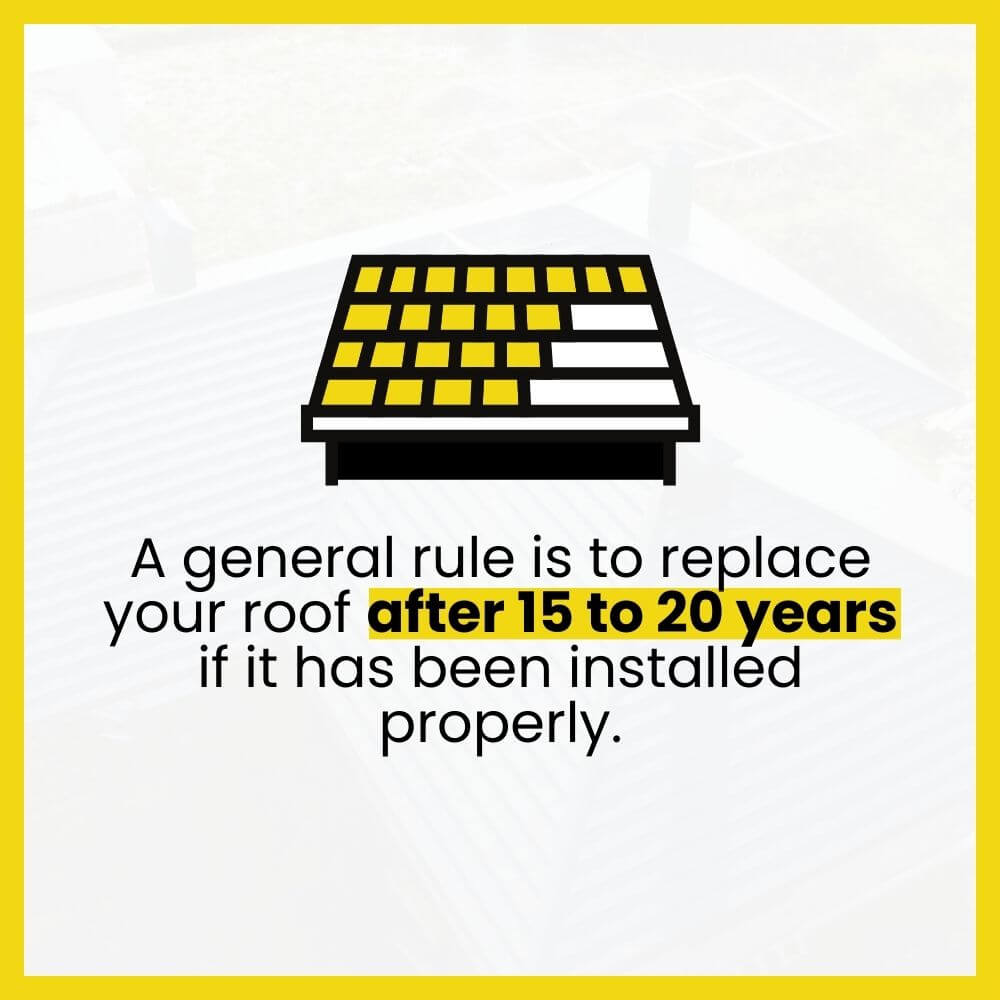
Different Roofing Materials and Their Lifespans
The longevity of a roof largely depends on the type of material used. Here’s a look at some common roofing materials and their average lifespans:
- Asphalt Shingles
Asphalt shingles are the most popular choice for residential roofing. They’re known for their cost-effectiveness and easy installation. They typically last between 15 to 30 years. A premium and more durable type of asphalt shingle known as architectural shingles can last up to 50 years.
- Metal Roofing
Metal roofs are increasingly favored for their durability, energy efficiency, and longer lifespan. Depending on the material (like steel, aluminum, or copper), a metal roof can last anywhere from 40 to 70 years.
- Tile Roofing
Clay and concrete tiles offer a unique aesthetic and exceptional durability. These roofs can withstand harsh conditions and have lifespans ranging from 50 to 100 years. They are particularly prevalent in regions with hot weather and are known for their fire resistance.
- Slate Roofing
Slate is one of the most durable roofing materials, often lasting over 100 years. It is naturally resistant to mold, fire, and weathering, which contributes to its longevity.
- Wood Shingles and Shakes
While offering a natural and rustic look, wood shingles and shakes have a shorter lifespan that lasts 20 to 40 years. They require more maintenance compared to other materials.
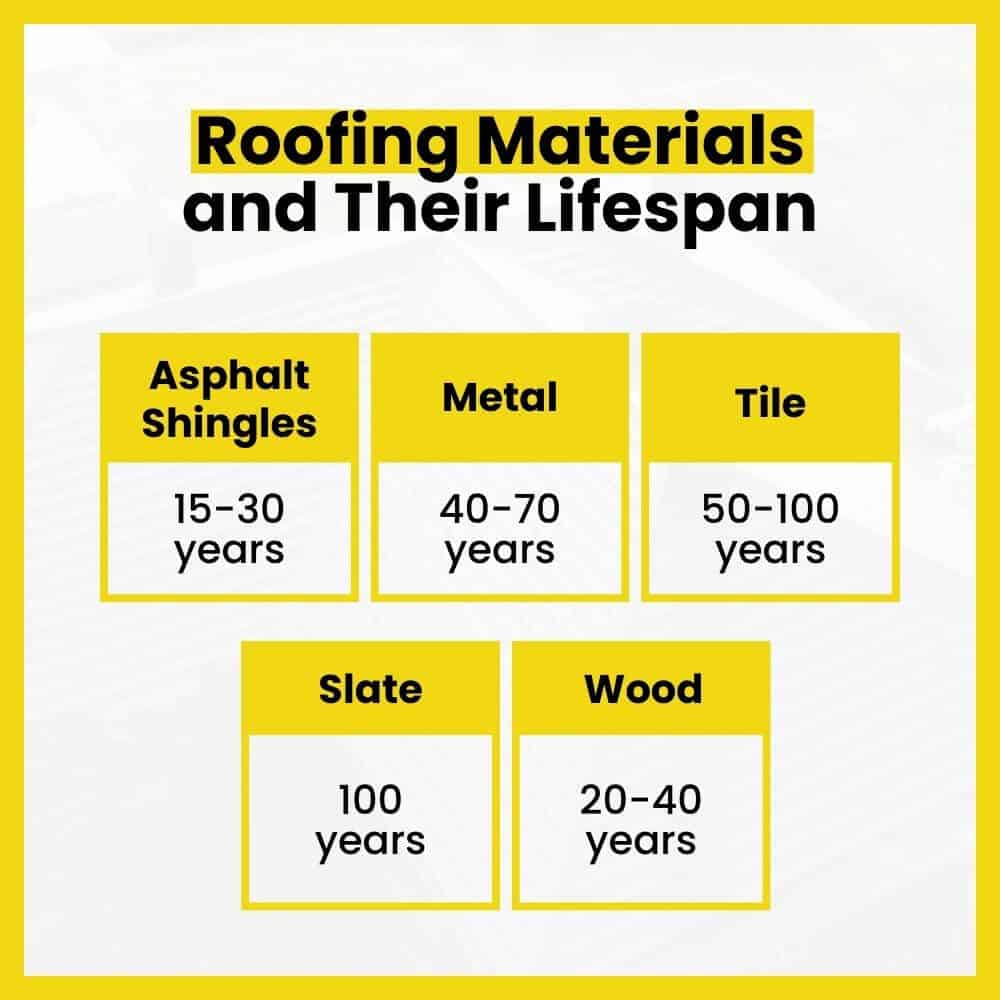
Factors Affecting Roof Longevity
Several external factors can impact the lifespan of your roof:
- Weather Conditions
Extreme weather conditions like hail, heavy snow, and high winds can cause immediate and long-term damage to roofs. Consistent exposure to harsh weather accelerates wear and tear.
- Maintenance
Regular maintenance plays a crucial role in extending a roof’s life. This includes cleaning gutters, removing debris, and addressing minor repairs promptly.
- Installation Quality
The longevity of a roof is significantly influenced by the quality of its installation. Improper installation can lead to issues like water leakage and reduced lifespan. Be sure to choose a skilled and experienced contractor for your roof installation.
- Ventilation and Insulation
Proper attic ventilation and insulation are essential in preventing heat and moisture buildup, which can damage the roof structure over time.
- Sun Exposure
Prolonged exposure to direct sunlight can degrade roofing materials, especially asphalt shingles. This leads to faster aging and the need for repair and maintenance.
Age-Related Wear and Tear
Different roofing materials age differently. You’ll know when you need a roof replacement if you start seeing signs of wear and tear.
Asphalt Shingles for instance tend to lose their granules and start to warp or buckle as they age. Meanwhile, metal roofing can rust or corrode if they’re not properly maintained.
The same goes for other types of roofing materials like slate and wood. They can rot, warp, or develop mildew in unfavorable environments.
The Benefits of Regular Maintenance
Understanding the longevity of your roof is crucial, but it’s equally important to recognize how regular maintenance can significantly influence its lifespan.
Routine inspections and timely repairs extend the life of your roof. And they help identify potential issues before they escalate into costly damages.
Extending Your Roof’s Life
A proactive approach to roof care involves conducting semi-annual inspections, particularly after major weather events, to catch and rectify minor issues before they develop into serious problems.
An important part of this routine is keeping gutters and downspouts clear. This prevents water buildup that could potentially compromise the roof’s structure.
In addition to these inspections, it’s important to regularly clear your roof of debris like leaves, twigs, and other materials. These can trap moisture, leading to deterioration over time.
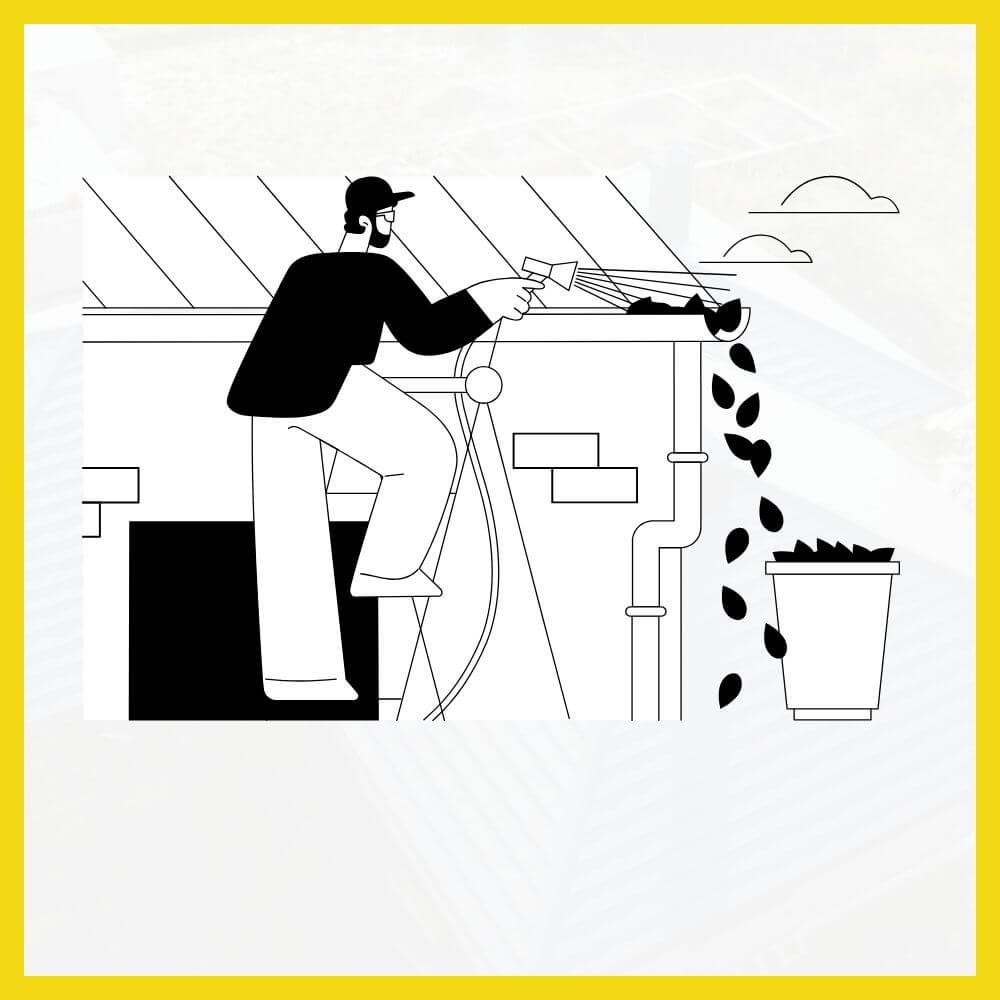
This is especially critical in damp climates where the formation of moss and algae on roofs is common. Regular cleaning of these growths is necessary to avert potential damage.
Another key aspect of roof maintenance is the prompt replacement of damaged shingles. Whether they are broken, missing, or simply worn out, addressing these issues quickly can prevent leaks and further damage.
Investing in professional maintenance ensures that your roof is not only well-cared for but also retains its integrity and functionality for a longer period.
When Maintenance Isn’t Enough
Despite regular maintenance, there comes a time when the roof’s condition necessitates replacement rather than repair. These are scenarios when maintenance is no longer sufficient:
- End of Life Cycle: When a roof reaches or exceeds its expected lifespan (which varies by material), it’s generally time for a replacement.
- Widespread Damage: If damage from storms, winds, or fallen trees is extensive, repairs might not be cost-effective or sufficient.
- Persistent Leaks: Multiple leaks or a single leak that reoccurs despite repeated repairs often indicate a systemic failure of the roofing system.
- Structural Damage: If the roof’s structure is compromised, as evidenced by sagging or severe water damage, repairs alone may not be adequate for safety.
- Major Renovations: If you’re considering major renovations like adding solar panels or significantly changing the home’s architecture, it might necessitate a new roof.
- Energy Efficiency Concerns: Older roofs might not be as energy-efficient. Replacing them with modern, energy-efficient materials can be a practical long-term investment.
In these instances, roof replacement is the most viable option. While it sounds like a significant investment, it ensures the safety, efficiency, and durability of your home for many years to come.
Professional Inspection and Assessment
Regular professional inspections are a cornerstone of effective roof maintenance. Entrusting a qualified inspector to examine your roof can discover issues that we don’t usually notice.
These professionals carry out thorough evaluations to spot minor leaks, structural issues, and damage caused by environmental factors.
The significance of these assessments escalates, especially after severe weather events, providing a critical overview of the extent of the damage.
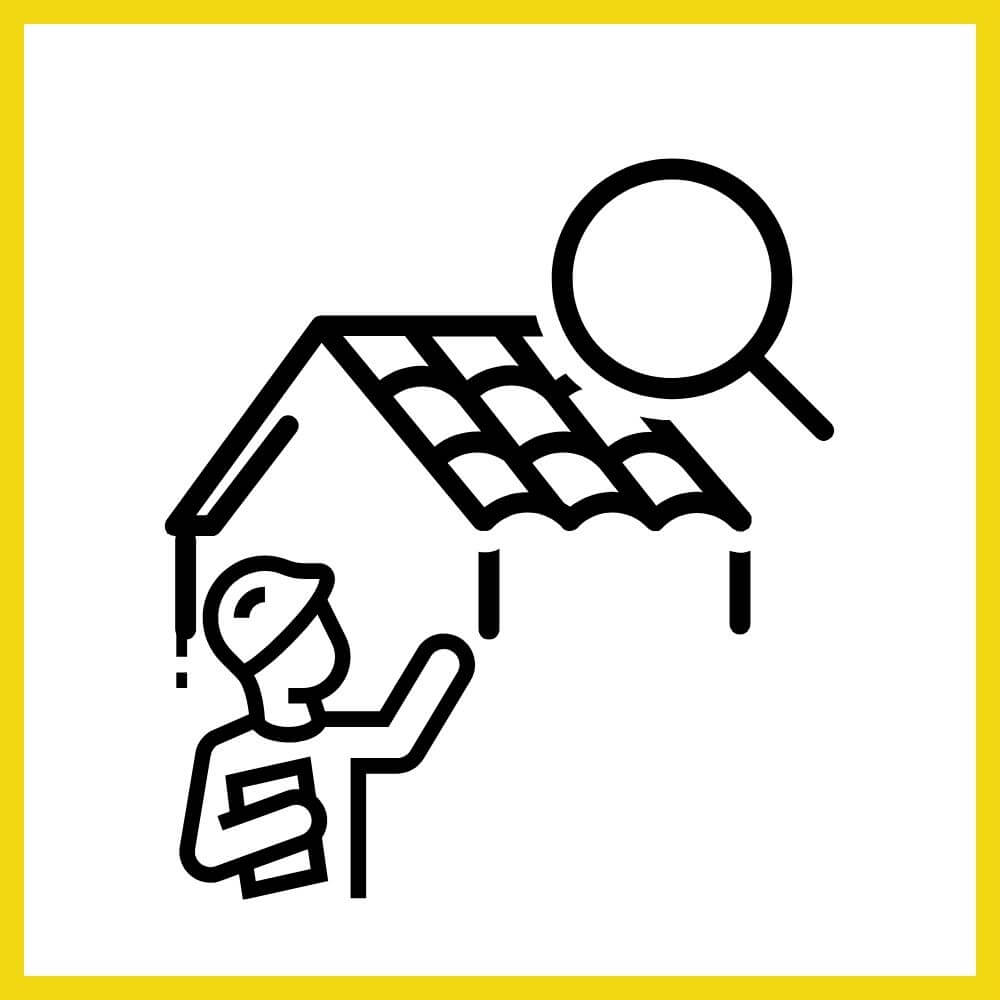
More than just identifying current problems, these inspections are proactive steps in averting small concerns from evolving into major repairs, thereby prolonging your roof’s lifespan.
Upon completion of an inspection, you’ll receive a detailed report that covers the condition of roofing materials, structural integrity, and signs of water damage. It also highlights issues like moss and algae growth, attic ventilation and insulation, and the effectiveness of gutters and downspouts.
More importantly, the report outlines recommendations for repairs, maintenance, or a complete replacement with a projected timeline.
The Importance of Timely Roof Replacement
Deciding when to replace your roof goes beyond simple home maintenance—it’s a strategic decision that requires careful consideration, understanding of your specific situation, and engagement with roofing professionals.
Remember, the longevity and safety of your home largely depend on the condition of your roof. It’s about ensuring that your roof is in capable hands for installation and maintenance.
Interested in ensuring your roof is in top condition or need advice on replacement?
We’re here to assist!
Call us at 770-333-8174 or send a message to request your free estimate.


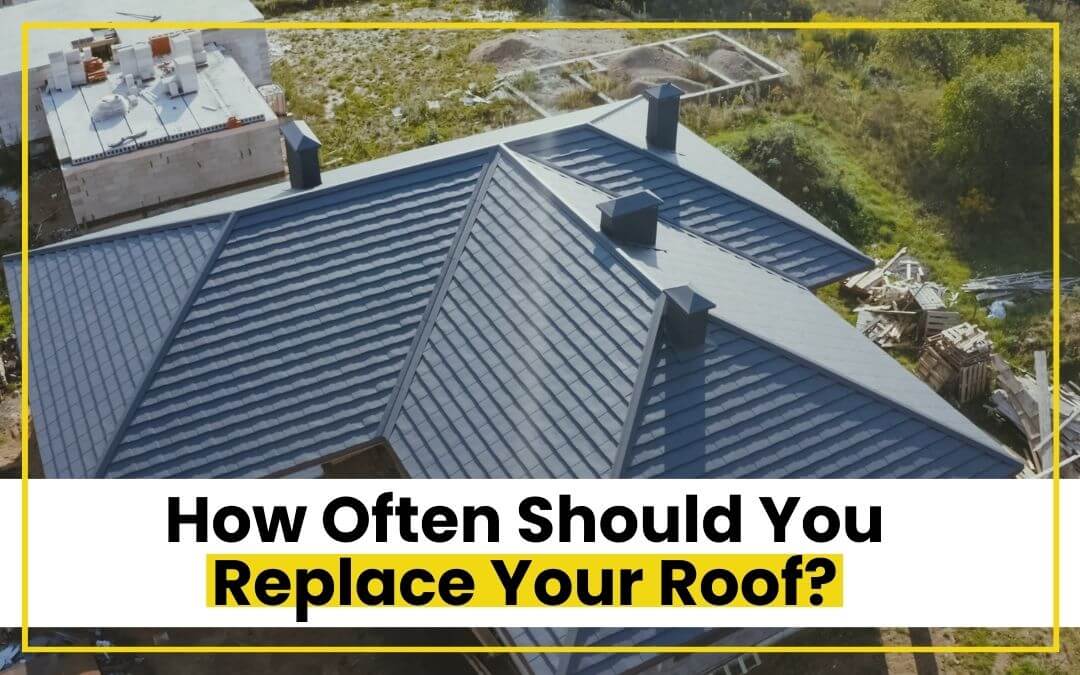
Recent Comments